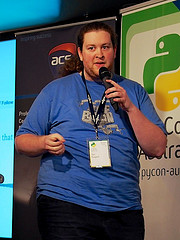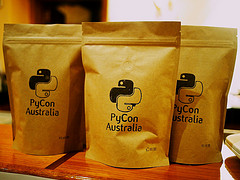Last week in Sydney was the second ever Swipe Conference –– an Australian iOS and OS X developer event. Secret Lab was again in attendance and, as always, the Apple developer community was great fun to hang out with and learn from –– and the organisers, Jake MacMullin, Mark Aufflick and Sean Woodhouse really put on a fantastic event. We were also again fortunate enough to have a chance to contribute to the conference (Paris spoke at the first ever Swipe Conference, in Melbourne last year), with Jon presenting Cocos2D for Fun and Profit, a quick guide to the Cocos2D graphics library. Designed as a fast introduction to this time-saving library, this talk leads the audience from a minimal starting point to a full game.
We're incredibly fond of Cocos2D, as it provides a very nice middle option for people who want more power than what UIKit can provide, but don't want to deal with the.. joy that is OpenGL. With Cocos2D, it's straightforward to create a scene comprising a number of quads, and even more trivial to animate these quads in useful ways.
We've uploaded the code and slides to GitHub and Speakerdeck, and encourage you to take a look! We had a number of people approach us after the talk and mention that they were now interested in making games with this library, so hooray, we're sharing the love!
We also took a lot of photos at Swipe Conference –– you can find them on Flickr.




